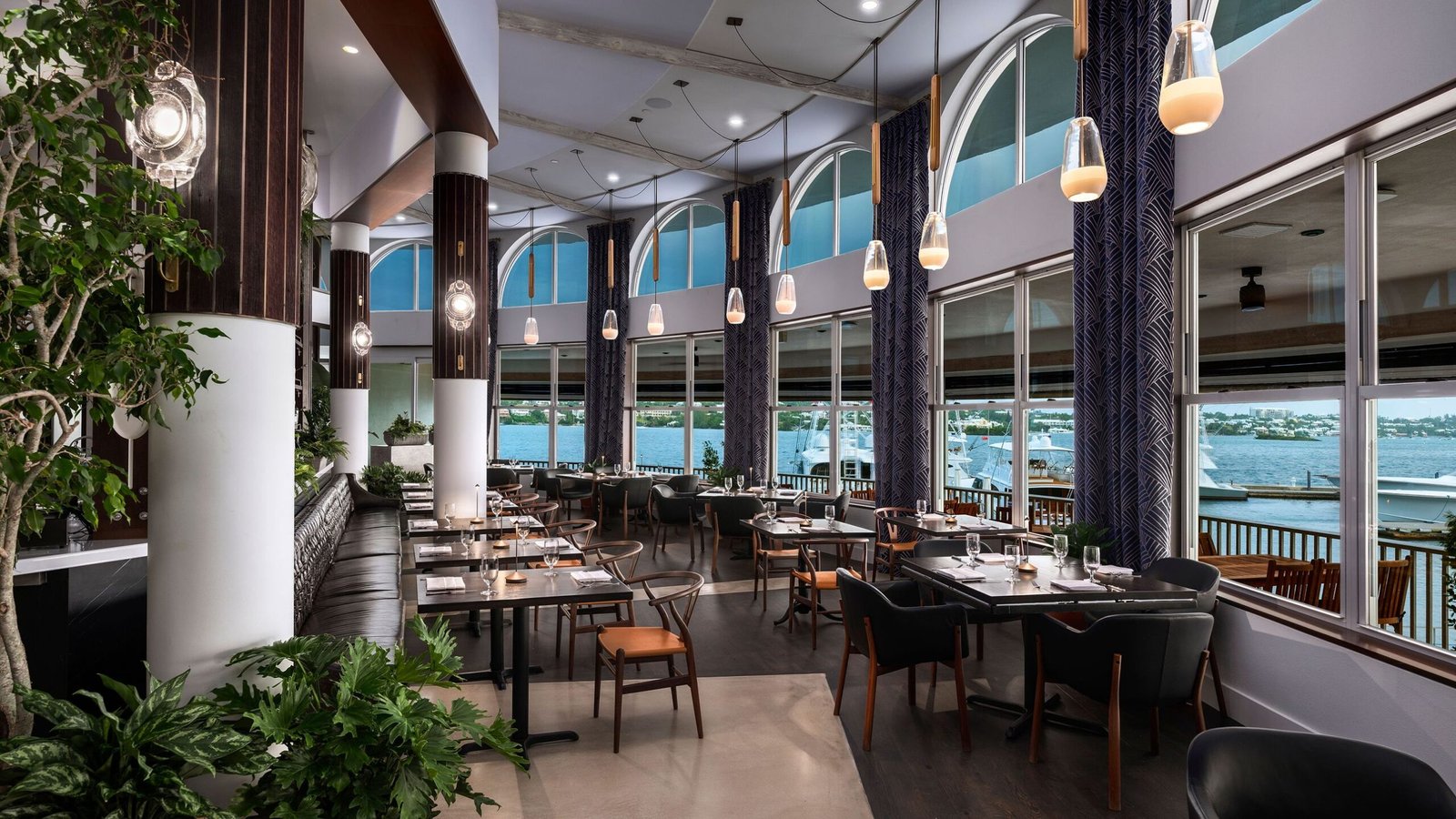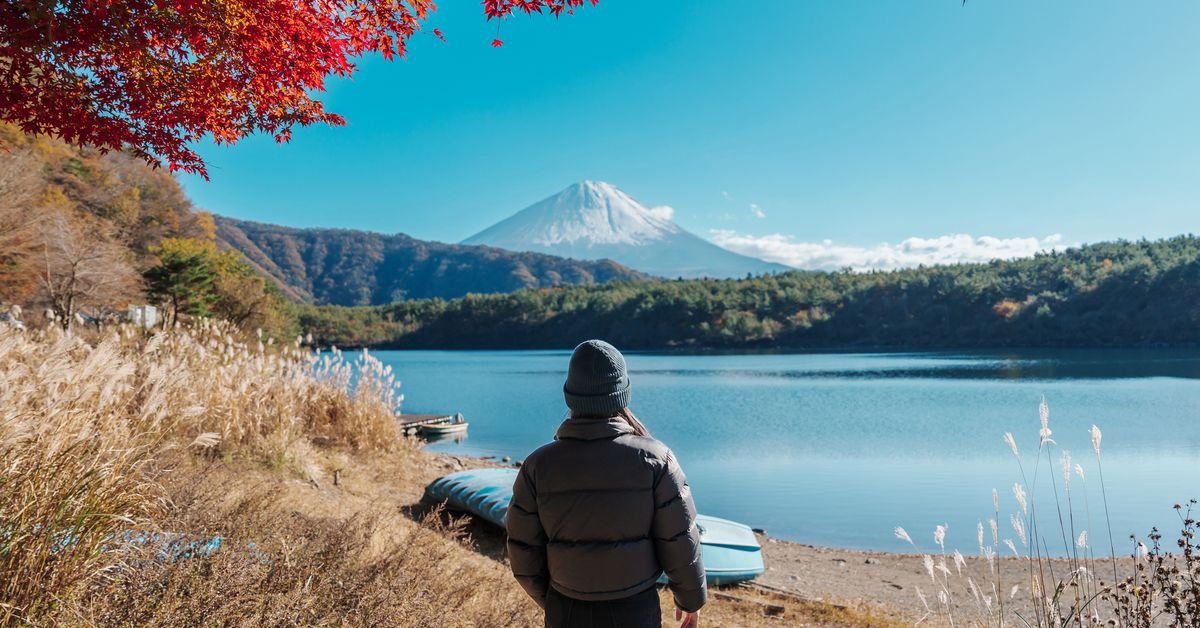Solo Travellers
20 Best Restaurants in Bermuda, From Fish Sandwich Joints to Sushi and Steakhouses

There’s never been a better time to dine out in this pink-sand paradise.
Source link
Solo Travellers
Malaysia travel on a budget: Content creator shares her solo trip plan under ₹50,000 | Travel

International trips for mid-budget tourists stir hesitation for being wallet-draining, making many sidestep the risks of spending over the budget and instead stick to local getaways. But with smart planning, what seems like an extravagant international trip can turn out to be surprisingly affordable.
ALSO READ: Nepal trip on a budget: 5 smart money-saving hacks to travel like a pro
Travel content creator Ashvini Sihra, who regularly shares tips on Instagram about her travel stories and budgeting, shared in a June 27 post how she took a solo 7-day trip to Malaysia for just Rs. 50,000.
1. Flights
One of the first concerns for most travellers is flights. Ashvini took two international flights (BLR–KL–BLR) and two domestic flights (KL–Penang–KL).
Ashvini detailed it, “I paid 21.5 K for return flights to Kuala Lumpur to Bangalore, paid 6 k for return flights from KL to Penang island.”
For getting around locally, she suggested choosing trains instead of domestic flights, as they cost nearly half the price while taking about the same travel time.
2. Stay
Accommodation is a major concern and can easily become one of the most budget-pressing expenses. This is why she chose hostels. This is why she chose hostels. She said, “I stayed in hostels and paid Rs. 6K total for 5 nights in hostels in Kuala Lumpur and Georgetown.”
3. Commute
Getting around the city costs around Rs. 5.5K, as she used public buses and cabs, including express trains to the airports.
4. Food
The gastronomic indulgence needs a balance between budget bites and indulgent treats, and Ashvini followed this by trying foods at various eateries with different budgets, as she said, “I tried a lot of food at local joints but also had coffee in cute cafés and fancy solo dates in not-so-cheap restaurants, and spent Rs. 6.5K on food.”
5. Activities
Paid attractions and activities were kept minimal, prioritising free experiences. She did only two paid activities.“I spent Rs. 3.4K to be exact on activities, which includes my cycle tour and funicular ride to Penang Hill.”
6. Data
Digital connectivity is of utmost importance, especially when you are on a trip. On the trip, the data connectivity also had an affordable option. Ashvini got an eSIM from Klook, paying Rs. 549 for 7 days of data-only service. This pack didn’t include calling facilities.
Overall, the trip, including everything, from flights, food to accommodations, all wrapped up under Rs.50, 000.
Solo Travellers
Solo travel: The best cities in the world to visit post-breakup, according to new study

You know what they say: the best way to get over someone is to… jump on a plane?
Solo travel is increasingly becoming a powerful method of healing for people going through a break-up.
It makes sense – solo trips are the ultimate act of self-care, as you have no one to look out for but yourself.
And one city comes out on top as the best place in the world when you need a bit of “me time”.
The team at Split Up analysed worldwide travel data to find that Tokyo is the ultimate post-breakup destination.
With hundreds of wellness retreats and spas, plus a very safe and welcoming culture and affordable travel costs, the Japanese capital should be the number one spot on your list next time your heart gets broken.
READ MORE: Aussies are ditching classic cruising destinations and heading to Asia instead
Though it’s a sprawling metropolis, there are a number of beaches, lakes, and rivers within day-tripping distance of Tokyo – a great place to embrace nature and get a sense of peace and clarity post-breakup.
READ MORE: The Getaway Expert: Two ‘secret’ words that will unlock the perfect weekend away
The study also cites Japan’s affordability, making it a great place to base yourself for a solo trip without breaking the bank.
Plus, if you want to just lie in your hotel bed and cry, at least you won’t be paying thousands of dollars to do so.
Second on the list is London. There’s something to be said about the sense of freedom and calm that comes from being anonymous in a crowd, and as London’s such a huge city, it’s easy to lose yourself in its rhythm.
London also has the most green spaces of the cities on the list, with plenty of natural environments for stress relief and peaceful reflection.
The research was done by crunching the numbers around safety scores, accommodation costs, and wellness-boosting factors to reveal the top destinations where, as they put it, “heartbreak transforms into healing”.
Rounding out the top three is Auckland, New Zealand. A much smaller city, it’s perfectly situated near both beaches and mountains for anyone who wants to heal by immersing themselves in nature.
Taipei claims fourth place, with an impressive array of wellness retreats and spas within the city. It also has a great safety rating, making it ideal for solo travellers.
In fifth place is Seoul, South Korea, a city known for its legendary bathhouses where you can soak away your worries.
The ten best cities to visit post-breakup:
- Tokyo, Japan
- London, UK
- Auckland, NZ
- Taipei, Taiwan
- Seoul, South Korea
- Warsaw, Poland
- Oslo, Norway
- Gothenburg, Sweden
- Singapore City, Singapore
- Helsinki, Finland
Solo Travellers
The $1 Trillion Wellness-Driven Consumer Revolution and How to Invest in It

The global solo travel market, valued at $482.5 billion in 2024, is projected to surge to $1.07 trillion by 2030, growing at a blistering 14.3% CAGR. This explosion is not merely a post-pandemic rebound but a seismic shift in how people engage with the world. Solo travel is evolving into a $1 trillion wellness-driven consumer revolution, fueled by Gen Z and Millennials prioritizing self-discovery, digital nomadism, and hyper-personalized experiences. For investors, this trend offers a golden opportunity to capitalize on three pillars: lifestyle brands, experiential tech, and emotional wellness platforms.
The Market’s Growth Drivers: A Perfect Storm
The solo travel boom is underpinned by three key forces:
1. Post-Pandemic Behavioral Shifts: The pandemic normalized solitude, with 76% of Millennials and Gen Z planning solo trips in 2025. Solo travel is now seen as a path to self-care, mental health, and meaningful social connections.
2. Digital Nomadism: Hybrid work models have turned travel into a lifestyle. Digital nomads, who often stay in destinations for months, are reshaping demand for flexible accommodations, co-working spaces, and wellness-focused stays.
3. Experiential Consumption: Consumers increasingly value experiences over material goods. Solo travelers seek transformative journeys—wellness retreats, cultural immersion, and immersive tech-enhanced adventures.
Lifestyle Brands: Reimagining Hospitality for the Solo Traveler
Hotels and resorts are redefining their offerings to cater to solo travelers. Hilton and The Oberoi Beach Resort in Mauritius, for instance, have introduced “MeMooning” and “Touching Senses” programs, respectively. These include flexible seating, personalized dining, and wellness activities like stargazing and painting.
Investors should target brands that:
– Prioritize Solo-Friendly Design: Look for properties with private spaces, co-working areas, and safety-focused amenities (e.g., women-only tours).
– Leverage Niche Demographics: Women now account for most solo bookings, driven by empowerment and safety innovations. Brands like A&O Hostels in Europe, which blend work-friendly infrastructure with social hubs, are prime candidates.
– Integrate Wellness: The Oberoi’s $200-per-night “Touching Senses” package, which includes cultural workshops and mindfulness sessions, reflects a growing demand for purpose-driven stays.
Experiential Tech: The AI-Driven Travel Revolution
Technology is the backbone of the solo travel renaissance. AI-powered platforms like Booking.com and Expedia are now offering hyper-personalized itineraries, real-time safety alerts, and dynamic pricing models. Startups are emerging to fill gaps in solo-specific services:
– AI Itinerary Planners: Tools like Much Better Adventures use machine learning to curate adventure-based trips, fostering “type two fun” (shared challenges that build connections).
– Sustainability Platforms: Apps like GreenGo integrate carbon calculators and eco-certified accommodations, appealing to eco-conscious solo travelers.
– AR/VR Integration: Virtual reality tools are enhancing pre-trip planning, while AR apps provide real-time cultural context during visits.
Investors should focus on tech companies that:
– Address Safety and Flexibility: Real-time risk assessment tools and solo-inclusive pricing models are critical for trust-building.
– Gamify Wellness: Platforms that reward eco-conscious behavior or mindfulness practices (e.g., Calm‘s travel-specific meditations) align with Gen Z’s values.
– Scale via Partnerships: Collaborations with local governments or tourism boards (e.g., verified stay directories) enhance credibility and adoption.
Emotional Wellness Platforms: The New Travel Essential
Solo travel is increasingly intertwined with mental health. Platforms like Headspace and Calm have expanded their offerings to include travel-specific content, such as guided meditations for long flights or stress-relief exercises for navigating unfamiliar environments.
Emerging startups are carving out niches:
– Moodfit and Worry Watch help travelers track emotional triggers and apply cognitive-behavioral techniques.
– Erika’s Lighthouse provides free mental health resources for young solo travelers, addressing loneliness and anxiety.
– Peer-to-Peer Networks: Platforms like SoloNomads connect travelers for shared adventures, blending social interaction with self-discovery.
Investors should prioritize platforms that:
– Offer 24/7 Accessibility: Solo travelers need on-demand support, especially in time zones with limited local resources.
– Integrate with Travel Infrastructure: Partnerships with airlines, hotels, or insurance providers (e.g., solo-specific travel insurance) create sticky ecosystems.
– Leverage AI for Personalization: Apps that adapt to user behavior (e.g., suggesting a yoga session after a long hike) will dominate.
Strategic Investment Playbook
- Lifestyle Brands: Target mid-sized hospitality chains with agility to innovate (e.g., Marriott’s niche brands like Residence Inn for extended stays).
- Experiential Tech: Invest in AI-driven startups or acquire them via larger travel firms (e.g., Expedia’s potential M&A activity in solo-specific tech).
- Wellness Platforms: Focus on apps with strong user retention and partnerships with travel insurers or employers (e.g., Headspace for Business).
The solo travel market is not just about selling trips—it’s about selling freedom, self-discovery, and emotional resilience. For investors, the key is to align with companies that understand this shift and are building ecosystems where solo travelers thrive. As the market nears $1 trillion, the winners will be those who blend technology, wellness, and personalization into seamless, transformative experiences.
The time to act is now. The solo travel revolution is not a passing trend—it’s the future of how we live, work, and connect.
-

 Brand Stories3 weeks ago
Brand Stories3 weeks agoBloom Hotels: A Modern Vision of Hospitality Redefining Travel
-

 Brand Stories2 weeks ago
Brand Stories2 weeks agoCheQin.ai sets a new standard for hotel booking with its AI capabilities: empowering travellers to bargain, choose the best, and book with clarity.
-

 Destinations & Things To Do3 weeks ago
Destinations & Things To Do3 weeks agoUntouched Destinations: Stunning Hidden Gems You Must Visit
-

 Destinations & Things To Do2 weeks ago
Destinations & Things To Do2 weeks agoThis Hidden Beach in India Glows at Night-But Only in One Secret Season
-

 AI in Travel3 weeks ago
AI in Travel3 weeks agoAI Travel Revolution: Must-Have Guide to the Best Experience
-

 Brand Stories1 month ago
Brand Stories1 month agoVoice AI Startup ElevenLabs Plans to Add Hubs Around the World
-

 Brand Stories4 weeks ago
Brand Stories4 weeks agoHow Elon Musk’s rogue Grok chatbot became a cautionary AI tale
-

 Brand Stories2 weeks ago
Brand Stories2 weeks agoContactless Hospitality: Why Remote Management Technology Is Key to Seamless Guest Experiences
-

 Asia Travel Pulse1 month ago
Asia Travel Pulse1 month agoLooking For Adventure In Asia? Here Are 7 Epic Destinations You Need To Experience At Least Once – Zee News
-

 AI in Travel1 month ago
AI in Travel1 month ago‘Will AI take my job?’ A trip to a Beijing fortune-telling bar to see what lies ahead | China













You must be logged in to post a comment Login